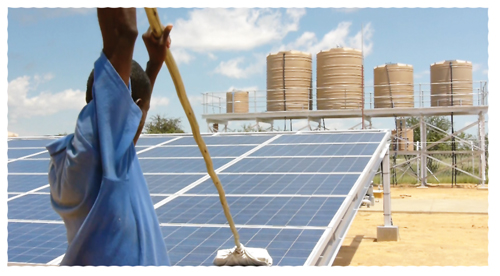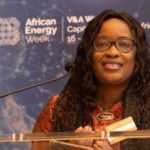
Twenty years after Andrew Young built the now-defunct ostrich abattoir, he is back with business friends

Spending an hour with Andrew Young in his office in Atlanta, GA, in 1999 was one of the highlights of the earlier part of my career. At that time, his shot at the American presidency was not that long ago and still formed part of his impressive resumé.
What I remember most of my Young interview were the many accolades he has collected for his work of taking Atlanta from a backwater state in 1981 when he became its first black mayor, to a progressive, modern, semi-industrialised state with its own international airport when I visited in 99.
Perhaps the most revealing part of our discussion was when he informed me that an investor group to which he was affiliated, was working on plans to invest about US$ 7 million in an ostrich abattoir in the south of Namibia. Immediately my ears perked and when I noticed his mischievous smile, I knew he knew he had me hooked.
As it turned out, the ostrich facility at Coenbult on the banks of the Fish River some 30 kilometres from Keetmanshoop became a reality. If my memory serves me correct, the total capital investment at that time was about N$70 million, and the exchange rate was N$6,20 to the US dollar. This translates to a Young investment of N$43 million, ultimately giving his group shareholder control at roughly 60% of equity.
The abattoir’s history is common knowledge. When the Namibian ostrich industry collapsed, the abattoir was turned into a small stock slaughtering facility which suffered from the same gross government interference as did the ostrich industry. As far as I know the facility is dormant.
At the end of 2014 going into 2015, there was much local talk about reviving ostriches as an agricultural commodity. In the meantime, the very successful South African ostrich industry had survived the market implosion and was back firing on all six cylinders. It was then that I toyed with the idea whether Mr Young’s investment group perhaps still controlled the defunct abattoir but I could not verify my mild suspicions.
But as with any industry where fatcat middlemen, corruption and government interference abound, nothing came of the 2015 hopes for a revival. Ostriches are still as dead as they were in the early 2000’s.
When the US Information Service informed me last month that Mr Young, now 86 years old, will be escorting a US business delegation to Namibia, it rekindled all sorts of questions I had about the ostrich abattoir investment.
Sadly, my schedule never allowed me to attend the investment seminar in Windhoek where he participated but about a week later, the Namibian Ports Authority announced that Mr Young and his delegation have visited the harbour. The picture at the top is of him and the NamPort top management. (Courtesy of NamPort)
I am spiffballing but I suspect Mr Young’s visit had much to do with trade between the United States and Namibia and not so much with direct investment. If I consider his track record of promoting trade in Atlanta and of the enormous task of getting the international airport built, it seems not a scatterbrain idea that trade facilitation may still be his forté. Or at least he is a powerful connector when it comes to opening African trade doors for American companies, and vica versa.
I doubt it very much that Mr Young will ever again promote US project investments in Namibia, not after the Coenbult calamity, but it now seems that he has not forgotten us or our potential, even if it is almost 20 years later.
I will probably never know the real agenda for his visit but an octogenarian does not travel halfway around the world for no reason at all. It will be fantastic if Mr Young can convince a new generation of American investors that we are a sound investment goal, but before that happens, I suppose they would want some government guarantees, not the conventional financial type but an operational guarantee of sorts: “we will not interfere in private sector projects!”












































